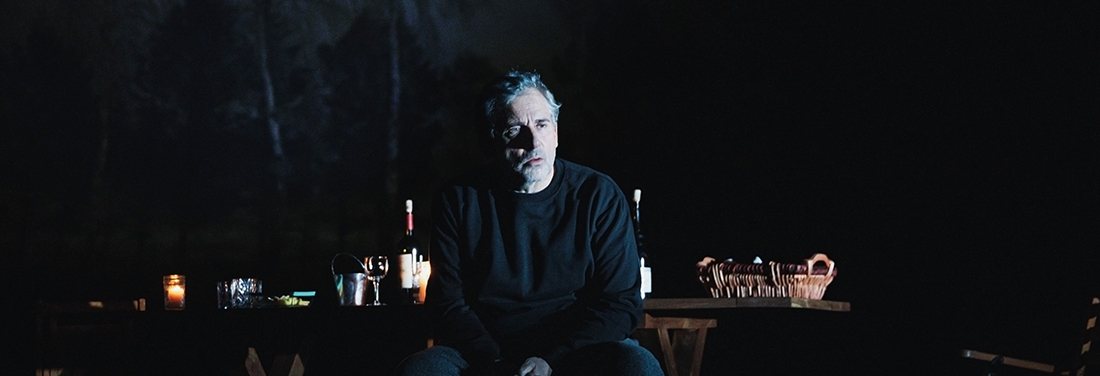

The high points of the 16 month celebration were, among others, brand new productions with star-studded casts of the cornerstones of the rich and varied tradition of French Operas. The list included Giacomo Meyerbeer’s Les Huguenots and Hector Berlioz’s Les Troyens reviewed here last season. This season Paris Opera assembled an all-French cast to stage arguably the most well-known example of opéra-ballet, Jean-Philippe Rameau’s Les Indes Galantes, seen at Opéra Bastille on Sunday October 6.
Rameau (1683 – 1764) was quite possibly the most enigmatic French composer ever; he was one of the 18th century’s most important music theorists (His 1722 Treatise on Harmony is still widely used till today) and harpsichord composers. It wasn’t till he was almost 50 years old when he embarked on his opera journey and changed the course of French musical tradition with his first tragédie en musique opera, Hippolyte et Aricie, where he broke from Lully’s conventions with his harmonic innovations.
Hot off the scandalous success of Hippolyte et Aricie and intending to entertain, Rameau decided to try his hand at opéra-ballet with his second opera, Les Indes Galantes (The Amorous Indies), written to a French libretto by Louis Fuzelier. As customary at that time, Rameau and Fuzelier chose a mythological prologue followed a sequence of similar romantic tales set in exotic places (The Ottoman Empire, Peru, Persia, and eventually North America.)
The prologue and the first two of the entrées were premiered by Académie Royale de Musique in Paris on 23 August 1735, the first version of the third entrée was added during the third performance. A year later, the third entrée was revised, and the final entrée (“Les sauvages”) was added. The first version of the third entrée was used for these performances.
“Les sauvages” had an interesting backstory. In 1725, the French-held Louisiana Territory sent Chief Agapit Chicagou of the Mitchigamea and five other chiefs to Paris, where on 25 November 1725, they met with King Louis XV to pledge allegiance to the crown. They later danced three kinds of dances – representing Peace, War and Victory – in the Théâtre-Italien.
One of the observers was Rameau, who subsequently wrote the harpsichord piece “Les Sauvages”, published in 1728 as part of his Nouvelles Suites de pièces de clavecin. The same theme was reused as the famous “Dance of the Peace Pipe” in the fourth entrée, which even bore the same title.
Les Indes Galantes have long been touted as the shining example of the Age of French Enlightenment; it was even advertised so in the Paris Opera website. The Enlightenment brought the now widely accepted principles of reason and equality into the public consciousness, both in Europe and the US (see the Declaration of Independence, for example).
Voltaire, a key Enlightenment philosopher, thought that people of other cultures and religions should not only be tolerated but embraced as part of a greater brotherhood of man. Yet, as the website mentioned, “Rameau’s first opera?ballet also testifies to the ambiguous view held by Europeans concerning other peoples – Turks, Incas, Persians, ‘Savages’,” particularly reflected in the libretto.
In 2017, French contemporary artist and filmmaker Clément Cogitore created an award-winning short video as part of 3e Scène program – Paris Opera’s digital platform designated for artists to create original artwork related to their programs. Set as a Krump Battle on the stage of Opéra Bastille using the aforementioned “Dance of the Peace Pipe”, the short movie turned into a powerful statement of maintaining peace as a community (bear in mind that Krump itself was born as a way to escape gang life in early ‘00s LA).
Stéphane Lissner, Paris Opera’s director, said, “I was deeply moved when I saw Clément Cogitore’s film. He took the subject of ‘Les Indes Galantes,’ its condescension toward the ‘other,’ and turned it on its head.” He subsequently signed Cogitore and one of the film’s choreographers, Bintou Dembélé – a French hip-hop dance’s pioneer – to headline Paris Opera’s new production of Les Indes Galantes, despite the fact that Cogitore had no prior experience staging an opera. Along the way came a multitude of coverage, interviews and articles regarding this “unique” collaboration (which also featured Dembélé’s dance troupe Compagnie Rualité), making it one of the most publicized shows in the current season. Even the New York Times wrote an editorial on this subject, pointing out the many unreported Firsts of this production; namely first black choreographer and first openly transgender woman performer on stage (voguer Giselle Palmer).
With that much hype surrounding it, would such high-stakes gamble ultimately pay off? The answer was, fortunately, a resounding yes! The matinee performance that I saw proved to be one of the most profoundly thrilling opera experiences ever, one that stayed in my mind long after the applause ended. But before we start exploring the show’s virtues, let me begin with the most obvious problem of the production; the puzzling decision to stage this at the cavernous Opéra Bastille. Having seen the staging, nothing on stage seemed to warrant that trade-in with the loss of intimacy during the tender moments and possible inaudibility of some of the soloists.
In the very illuminating interview video above, both Cogitore and Dembélé detailed their collective approach in tackling Rameau’s box of delights. To me, their greatest strength was their ability to reset the context of Les Indes Galantes into a very recent and pressing political and social landscape while avoiding the pitfalls of the inherent colonialism in the libretto, and to express it in a community setting where dance is the language, guided by Rameau’s effervescent music.
This was especially reflected in the choices of dances employed by Dembélé. She noted, “In the course of my discussions with Clément, I began to imagine movements on the music: movements from Krump, Voguing, Popping, Glyding, Waacking, Bboying and Electro. These dance forms – originally from the Underground, from competitions or from clubbing as well as from the performing arts – were all born out of different political, historical, cultural and social contexts.”
Cogitore and Dembélé realized the vision with a simple yet effective stage by Alban Ho Van. It basically consisted of a multi-purpose center circle, transformable to be a volcano crater, a ring of fire, an entry/exit opening, a lift and a platform for the dancers. It created the perfect symbolism for community gathering as well.
It helped a lot that everyone involved with the show demonstrated total commitment to the project. The Argentinian conductor Leonardo García Alarcón, who led his Cappella Mediterranea in these performances, was the greatest strength of the performance. From the beginning notes of the Ouverture, he shaped the augmented orchestra with great elan and precision in a reading full of drama and colors, as if to match Cogitore’s vision. In his hands, Rameau’s music had a purpose, not just a collection of bonbons. As I was sitting not to far behind him, Alarcón’s conducting was truly fascinating to see; it was full of actions and vigor wrapped around a conspicuous sense of joy!
Time and time again, Cogitore displayed flashes of brilliance and thoughtfulness in reimagining the scenes. The mythical Prologue, usually staged as silly bickerings among Hébé (goddess of youth), Bellone (goddess of war) and Cupid/L’ Amour, was impressively turned to an expression of assimilation process by way of “dressing up” a la Project Runway. In the beginning, the show began with dancers in nude bodysuits, and during “Entrée des 4 nations” those dancers formed 4 lines to be dressed in colorful (and visibly Western) gowns and getups by various stylists and designers, supervised by Hébé, in full Anna Wintour regalia. Wojciech Dziedzic’s costumes were shining the brightest here, as the rest of the show they were mostly reduced to streetwear.
Sabine Devieilhe was one of the main reasons I made the trip to see this performance. She is no stranger to Rameau’s music obviously, having released all-Rameau album “Le Grand Théâtre de l’Amour” with Les Ambassadeurs in 2013. Her Hébé was marked with commanding presence and smart expressive phrasing. Her gorgeous soprano voice sounded effortless in many coloratura passages, however she was also very lyrical in her delivery. I was fortunate to sit very close to the stage to hear her, but I was wondering if her voice reached the back of the balconies.
The arrival of Bellone and her entourage provided one of the first disturbing moments in the show, as they were dressed in full riot police attire, completely with helmets and shields, ruining the peaceful elegant moment on stage. Will violence in the name of order be threatening any assimilation process of the “other”? Amidst the thundering drums and trumpets, the booming sound of Florian Sempey’s Bellone made the scene decidedly terrifying, despite the seemingly happy melody of “La Gloire vous appellee”.
In a dramatic entrance complete with veiled headpiece and excellent lighting by Sylvain Verdet, Cupid/L’Amour came to restore peace, and Jodie Devos brought authority and grace in her portrayal, performed with full round voice. Her fiery rendition of “Ranimez vos flambeaux” can be seen below:
The story of the first entrée, “Le Turc généreux” (“The Generous Turk”), set in the Ottoman Empire, was in many ways anticipating Mozart’s singspiel Die Entführung aus dem Serail and a typically Enlightened attitude; a magnanimous pasha Osman granting freedom and happiness to a pair of French captives Émilie and Valère, despite in love with Émilie.
Cogitore moved the setting into a club (giving a chance for the dancers to show-off their awesome Voguing skills) with Osman a kind of club owner and Émilie one of his dancers, making the story more palatable in contemporary sense.
The “boat” people (including Valère) clearly alluded to immigrants, and their entry was preceded with a jaw-dropping piece of stagecraft; a single giant hydraulic hand came from the ceiling into the center circle and pulled up an upside-down carcass of a boat, revealing the cast underneath!
Edwin Crossley-Mercer, fresh from acclaimed performance as Thésée in Hippolyte et Aricie at Opernhaus Zürich a couple of months ago, clearly knew his Rameau and brought his usual elegant reading as Osman. I felt that he was a bit less interesting here than as Thésée, particularly as his character was given very little to do other than stand and sing.
Julie Fuchs sang Émilie earnestly, and totally committed voguing with the dancers, so much so that I didn’t recognize her till she stepped out of her box to sing! On the other hand, Mathias Vidal was impressively lyrical as her lover Valère, his voice fit the demand of the role; although I also wonder about his audibility at far-end of Bastille.
“Les Incas du Pérou” is the most dramatic of the four entrées, it’s filled with all the ingredients of an opera: a love triangle with an eloping couple and a jealous authority person, a ritual, a sabotage, and even an earthquake and volcano eruption! The tone is Voltairean, attacking clericalism, as the high priest Huascar that loves the maiden Phani (who in turn loves the Spaniard Don Carlos) turns manipulative and ends up dead.
Cogitore transported the story into a study of cult lifestyle, drawing parallel between a high priest and the head of a cult (like Charles Manson). Huascar, Phani and the dancers were all wearing hoodies to identify as member of the cult, while Don Carlos in the riot police outfit. The juxtaposition worked extremely well to “modernize” the story, giving a sense of fear and danger to the whole proceeding.
Chœur de chambre de Namur truly excelled in this entrée in terms of vocal works and being active actors on stage, both in the ritualistic “Clair flambeau du monde” and particularly during the foreboding “Dans les abîmes de la terre” (during the earthquake).
Alexandre Duhamel brought dramatic intensity to his villain Huascar interpretation, making him almost sympathetic. Stanislas de Barbeyrac sounded dignified and heroic as Don Carlos, although the voice wasn’t quite the haute-contre that the score required.
Ironically, the true highlight of “Les Incas du Pérou” to me was the quietest point, Phani’s aria “Viens, Hymen.” This duet with a flute showed Devieilhe at her most vulnerable state, pouring her heart out kneeling on one corner of the stage.

After the intensity of the Prologue and the first two entrées, I was rather disappointed with the presentation of “Les fleurs” the third entrée, which had inept dramaturgy and more closely resembled the usual Regietheater productions.
The slight story of how the Persian prince Tacmas dresses in drag as a woman merchant to find out if his man Ali’s slave Zaïre loves him, while his own slave Fatime disguises herself as a (male) Polish slave and loves Ali was made even more cliché by transporting it to Amsterdam red light district, where Zaïre and Fatime were now just prostitutes working there. Tacmas kept his drag persona, but not Fatime. Ali was reduced more to look like a passer-by looking for a quick fix.
In addition, this entrée was also rather devoid of any dances, other than a couple dancers moonlighting as the other prostitutes alongside Zaïre and Fatime. I could understand why Cogitore chose this route, especially since the libretto was at its worst for this part. For example, in one duet, Zaïre was asking “Can we love in slavery? It will increase the pain,” and Tacmas replied with cringeworthy counter “One must love in slavery, it will soften the pain.” No number of dances could subvert that, methinks.
This was all pretty infuriating, especially as the singers Crossley-Mercer, Devos, Fuchs and specifically Vidal, stepped up their game here as Ali, Zaïre, Fatime and Tacmas respectively; their voices blended well with each other, most distinctively in the gorgeous quartet ”Tendre amour” (which unfortunately staged resembling a mass orgy.)
Things were much improved during the subsequent scene, La Fête des Fleurs (Festival of Flowers), which Cogitore separated out from the previous debauchery scene. Here the imagination run wild, from Fuchs strapped high up midair singing about inconstant butterfly (“Papillon inconstant”) while looking like one, down to Ballet des Fleurs reimagined as children playground, complete with carousel and a pied-piper leading the child dancers playing the flute melody.
In retrospective, the whole scene seemed to suggest innocence, perhaps even heaven, contrasting the earthly affair in the prior one.
Without break, we marched into the last, and my most favorite, entrée, “Les sauvages”. The center circle was raised up and with LED bars to resemble a prison; therefore, it was very clear from get-go that “the Savages” in discussion was the oppressed, the incarcerated ones – a very sensible reading in my opinion!
Sempey sang his opening aria “Rivaux de mes exploits” from behind the bars, adorned with Mike Tyson-like tribal face tattoo, while being taunted by the “Europeans” Damon and Don Alvar in military garbs. He got Adario’s characterization right, however he sounded very unsubtle in his delivery, at least to my ears, making Adario more like a boor (which, in itself, wasn’t exactly inappropriate).
Both de Barbeyrac and Duhamel were sufficiently cocky and boastful as Damon and Don Alvar respectively. To me, Adario needed to be sung elegantly and with restraint to differentiate himself for these two clowns. After all, if they were all boorish, why would Zima choose Adario over the other two?
Zima brought in another different persona for Devieilhe, this time she portrayed a flirty and carefree girl, decked in cheerleader costume complete with pom-poms and her own squad of backup dancers. In a sense of solidarity, it was refreshing to see all the other cheerleaders were sporting baby bumps as well! Devieilhe’s Zima sounded bright and confident, and her interactions with Damon and Don Alvar drew many laughs from the audience.
Nevertheless, I felt Zima and Adario’s love story wasn’t truly Cogitore’s focus for this entrée, but merely just an appetizer for what came next, the Savages’ cry for freedom and the conclusion. Sempey led the Chœur de chambre de Namur in a spectacular display of community uprising in the anthemic “Bannissons les tristes alarmes!”, complete with synchronized gestures reminiscent of Peter Sellars’ ethereal staging of Orlando di Lasso’s Lagrime di San Pietro.
The show reached its apex in the “Dance of the Peace Pipe” and the Ceremony of Peace “Forêts paisibles”. Cogitore and Dembélé didn’t just copy the short movie for this scene, but they expanded it to make it as a culmination of the whole performance, where soloists, chorus and the dancers were all on stage created a massive ritualistic celebration of peace.
Elements of Krump were there, but Dembélé smartly infused all other dances used throughout the show as if to show that equality and diversity were celebrated and respected. I got extremely emotional at that point; tears wouldn’t stop flowing! The show ended with Devieilhe in Hébé’s getup singing “Régnez, plaisirs et jeux!”, bringing it back full circle.
In a strong symbol of solidarity and teamwork, the final Chaconne was used as sort of bows, with each singer appeared accompanied by one or two of the dancers, and they each did a short group performance together to the music. It was heartening to see such a strong connection between everybody on stage! At the end of that matinee show, the audience showered the performers with a super long standing ovation, the longest I had ever experienced in Paris so far!
I often wrote about the cathartic aspects of experiencing operas on these pages, as they appealed to me the most. To me, this was truly a big win for Lissner and the perfect Anniversary celebration for Paris Opera, ushering them to the new era. Who knew that Rameau’s collection of divertissements could create such a big political, social and emotional statement? Rameau (and possibly Voltaire) would be so pleased!
Photos: E. Bauer
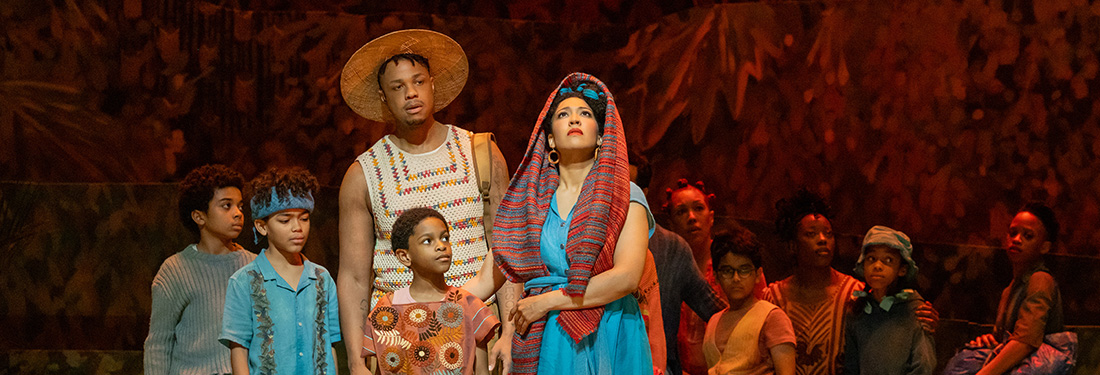





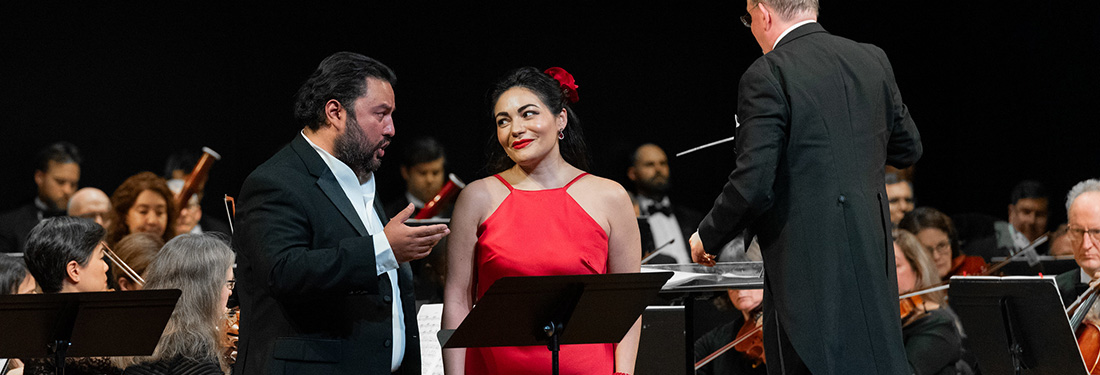
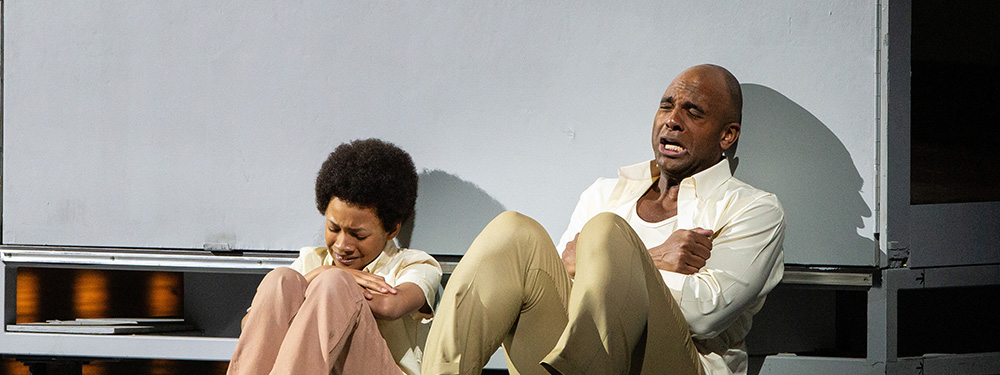
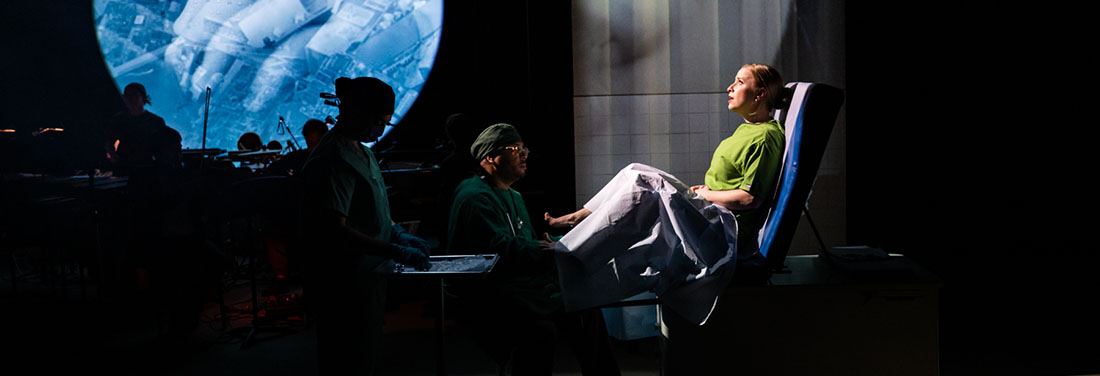
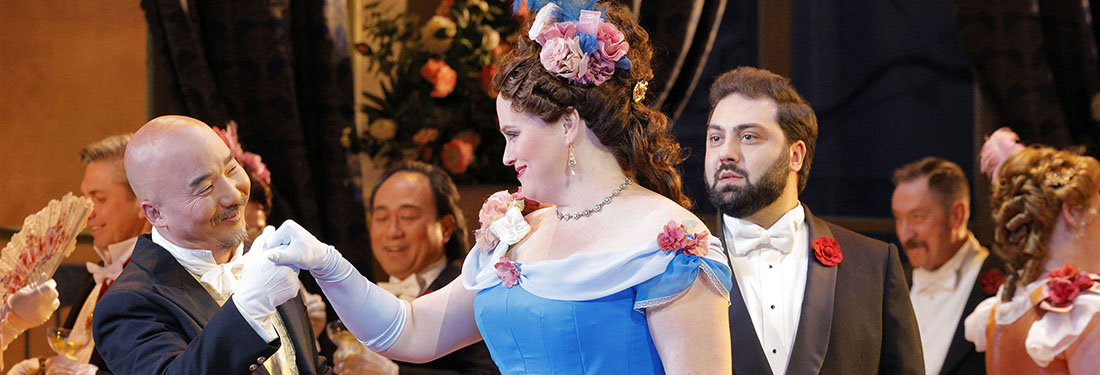

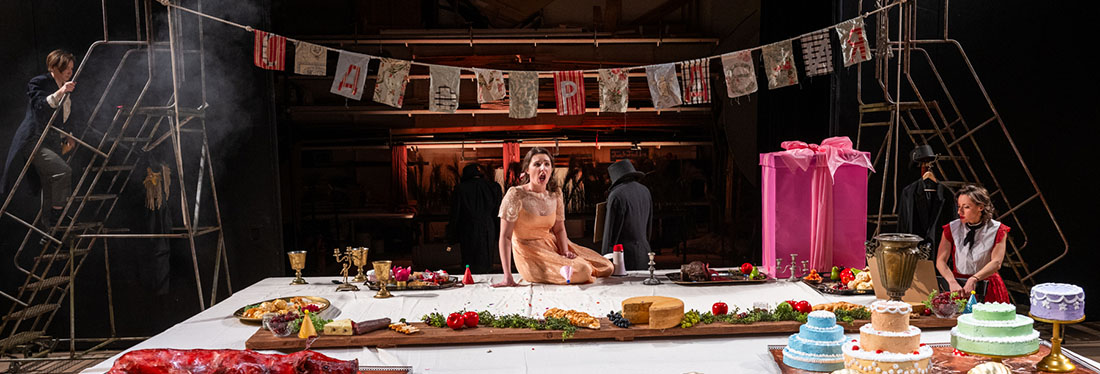
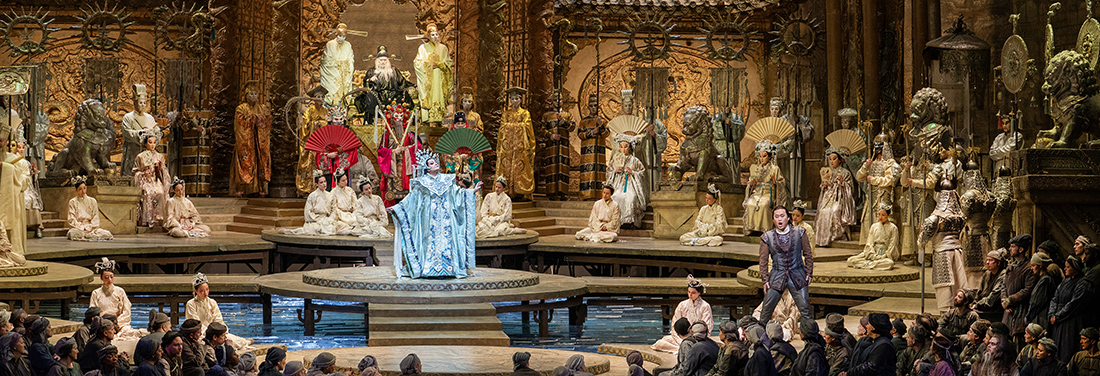
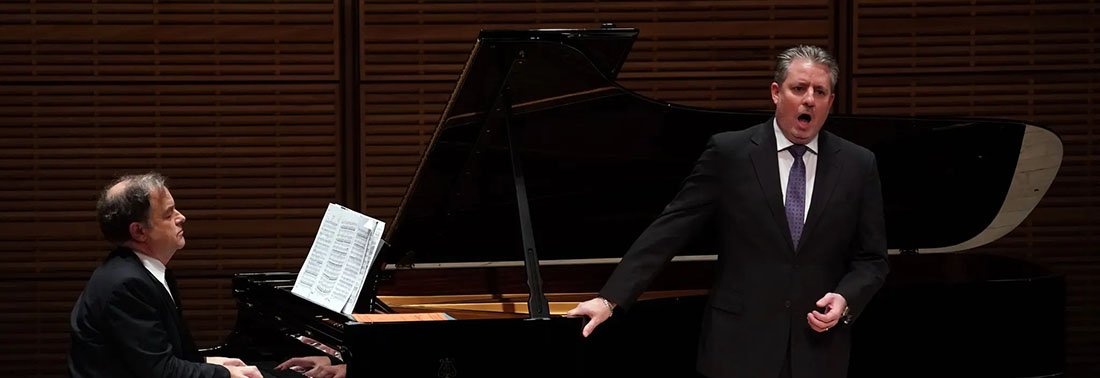
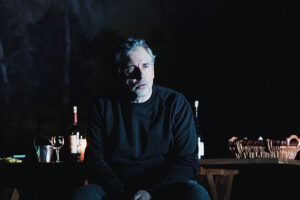
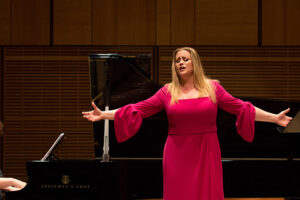
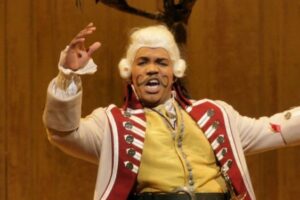

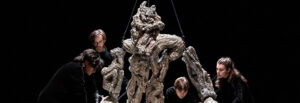
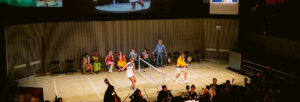



Comments